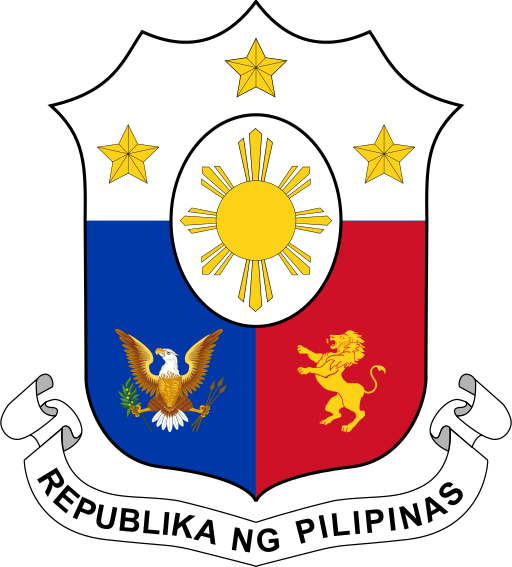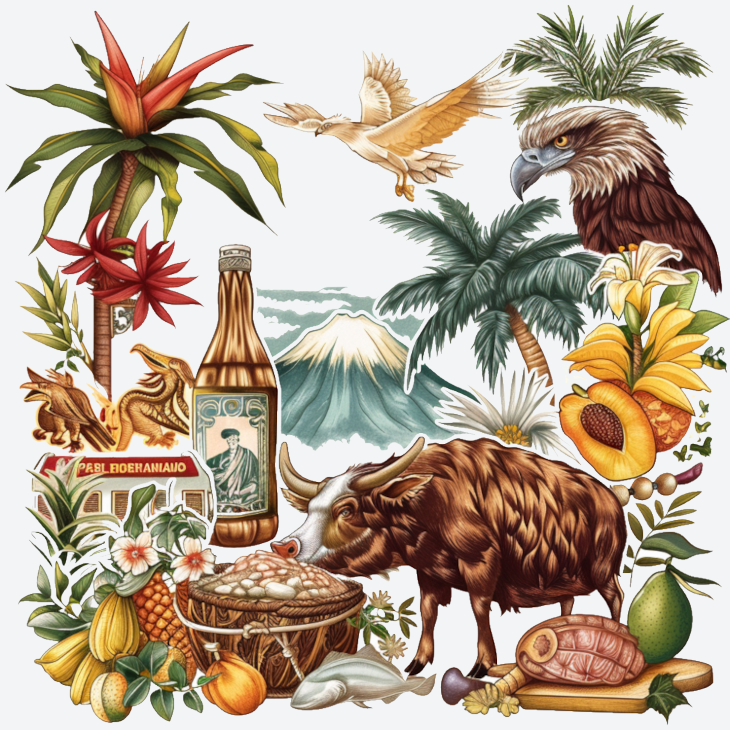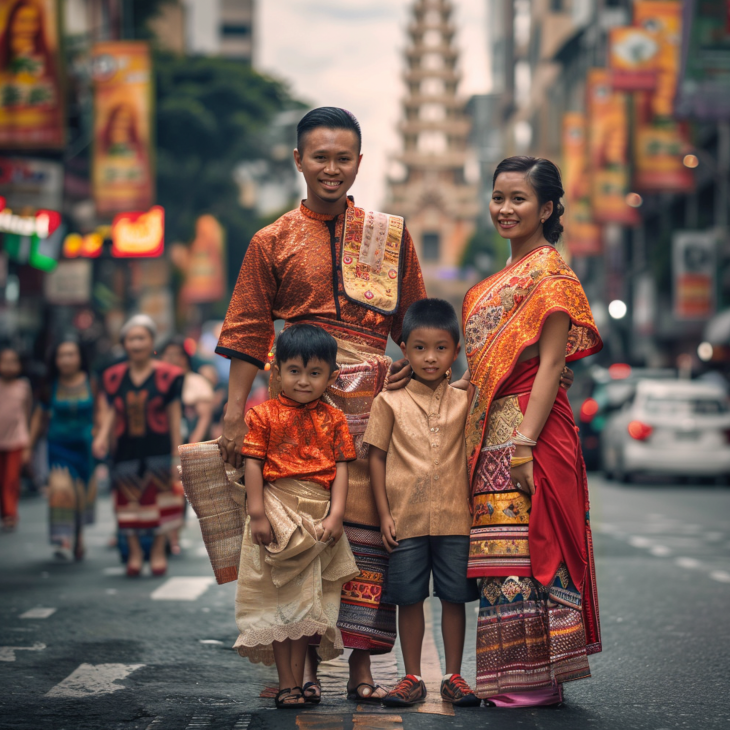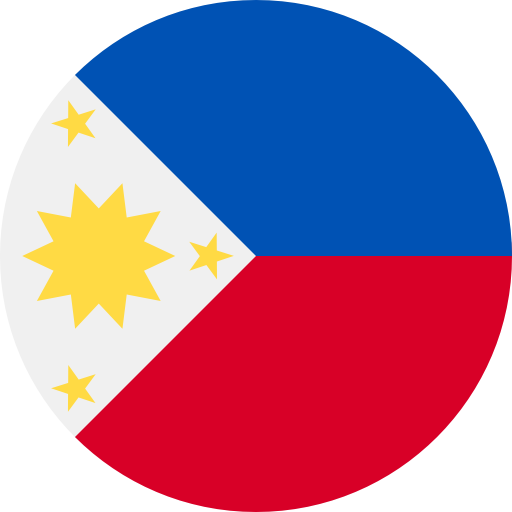About PH

Location
The Philippines is an archipelago located in Southeast Asia, comprising more than 7,000 islands in the western Pacific Ocean. It is situated between the Philippine Sea to the east and the South China Sea to the west.
Capital
The capital city of the Philippines is Manila.
Population
As of the latest estimates, the Philippines has a population of approximately 110 million people, making it the 13th most populous country in the world.
Area
The total land area of the Philippines is approximately 300,000 square kilometers (115,831 square miles), making it the 72nd largest country in the world by land area.
Official Languages
The Philippines has two official languages: Filipino (based on Tagalog) and English. Filipino is the national language, while English is widely used in government, business, education, and media.
Government
The Philippines is a democratic republic with a presidential system of government. The President serves as both the head of state and government and the country operates under a multi-party political system.
Independence
The Philippines gained independence from the United States on July 4, 1946.
Currency
The currency of the Philippines is the Philippine Peso (PHP).
Economy
The Philippines has a mixed economy with agriculture, manufacturing, and services sectors. Key industries include electronics, telecommunications, tourism, and business process outsourcing (BPO). The country has experienced steady economic growth in recent years, although poverty and income inequality remain challenges.
Natural Features
The Philippines is known for its diverse landscapes, including tropical rainforests, mountain ranges, volcanoes, and beautiful beaches. It is situated along the Pacific Ring of Fire and is prone to earthquakes and typhoons.
Culture
The culture of the Philippines is a blend of indigenous, Spanish, American, and Asian influences. Filipino culture is characterized by its hospitality, festivals, music, dance, cuisine, and religious practices.
Religion
Christianity is the predominant religion in the Philippines, with Roman Catholicism being the largest denomination. Other religious groups include Protestantism, Islam, and indigenous faiths.
Education
The Philippines has a system of public and private schools, colleges, and universities. Education is compulsory and free at the elementary and secondary levels. English is the primary medium of instruction in higher education.
International Relations
The Philippines maintains diplomatic relations with countries around the world and is a member of various international organizations, including the United Nations, the Association of Southeast Asian Nations (ASEAN), and the World Trade Organization (WTO).
Tourism
The Philippines is a popular tourist destination known for its natural beauty, cultural heritage, and warm hospitality. Tourist attractions include pristine beaches, coral reefs, historical sites, and vibrant cities.

National Items of the Philippines
Carabao
The Carabao (Bubalus bubalis) is the national animal of the Philippines. Known for its strength and endurance, it symbolizes the hardworking nature and agricultural heritage of the Filipino people.
Philippine Eagle
The Philippine Eagle (Pithecophaga jefferyi), also known as the Monkey-Eating Eagle, is the national bird of the Philippines. It symbolizes strength, power, and the rich biodiversity of the country.
Sampaguita
The Sampaguita (Jasminum sambac) is the national flower of the Philippines. Its fragrant white blossoms symbolize purity, simplicity, and humility.
Narra Tree
The Narra Tree (Pterocarpus indicus) is the national tree of the Philippines. Known for its durability and strength, it symbolizes resilience, sturdiness, and the natural heritage of the country.
Mango
The Mango (Mangifera indica) is the national fruit of the Philippines. It symbolizes the tropical abundance and agricultural richness of the country.
Barong Tagalog and Baro't Saya
The Barong Tagalog for men and Baro't Saya for women are traditional Filipino garments. They symbolize the cultural heritage, elegance, and traditional attire of the Filipino people.
Jose Rizal
Jose Rizal is the national hero of the Philippines. He symbolizes the fight for freedom, education, and national pride.
Jeepney
The Jeepney is a popular mode of public transportation in the Philippines. It symbolizes the ingenuity, creativity, and vibrant culture of the Filipino people.
Bangus (Milkfish)
The Bangus (Chanos chanos) is the national fish of the Philippines. It represents the rich aquatic resources and culinary traditions of the country.
Anahaw
The Anahaw (Livistona rotundifolia) is the national leaf of the Philippines. It symbolizes the lush tropical vegetation and the natural beauty of the country.
Tinikling
Tinikling is a traditional Filipino dance that involves bamboo poles. It symbolizes the cultural heritage, agility, and rhythm of the Filipino people.
Mayon Volcano
Mayon Volcano is an iconic natural landmark in the Philippines, known for its perfect cone shape. It symbolizes natural beauty, power, and the country's geological features.
Bahay Kubo (Nipa Hut)
The Bahay Kubo is a traditional Filipino house made of bamboo and nipa palm. It symbolizes simplicity, sustainability, and the traditional rural lifestyle of the Filipino people.
Lechon
Lechon, a roasted pig, is a popular Filipino dish served during celebrations. It symbolizes the rich culinary heritage and festive spirit of the Philippines.

"Lupang Hinirang" serves as a symbol of national pride and patriotism for the Filipino people, expressing their love for their country and their willingness to sacrifice for its freedom and prosperity.
The national anthem of the Philippines is called "Lupang Hinirang" in Tagalog, which translates to "Chosen Land" or "Beloved Land" in English. Here are the lyrics in Tagalog along with an English translation:
Bayang magiliw,
Perlas ng Silanganan
Alab ng puso,
Sa dibdib mo'y buhay.
Lupang Hinirang,
Duyan ka ng magiting,
Sa manlulupig,
Di ka pasisiil.
Sa dagat at bundok,
Sa simoy at sa langit mong bughaw,
May dilag ang tula,
At awit sa paglayang minamahal.
Ang kislap ng watawat mo'y
Tagumpay na nagniningning,
Ang bituin at araw niya,
Kailan pa ma'y di magdidilim.
Lupa ng araw, ng luwalhati't pagsinta,
Buhay ay langit sa piling mo;
Aming ligaya na 'pag may mang-aapi
Ang mamatay nang dahil sa iyo.
Beloved country,
Pearl of the Orient,
The fervor of the heart,
In your bosom is alive.
Chosen Land,
You are the cradle of the brave,
To the conquerors,
You shall never be enslaved.
In the sea and mountains,
In your breeze and azure sky,
There is splendor in the poem,
And song for beloved freedom.
The sparkle of your flag
Is a victory that shines,
Its stars and sun,
Will never dim.
Land of the sun, of glory and love,
Life is heaven within your embrace;
We find joy in suffering for you
To die for you is our delight.


